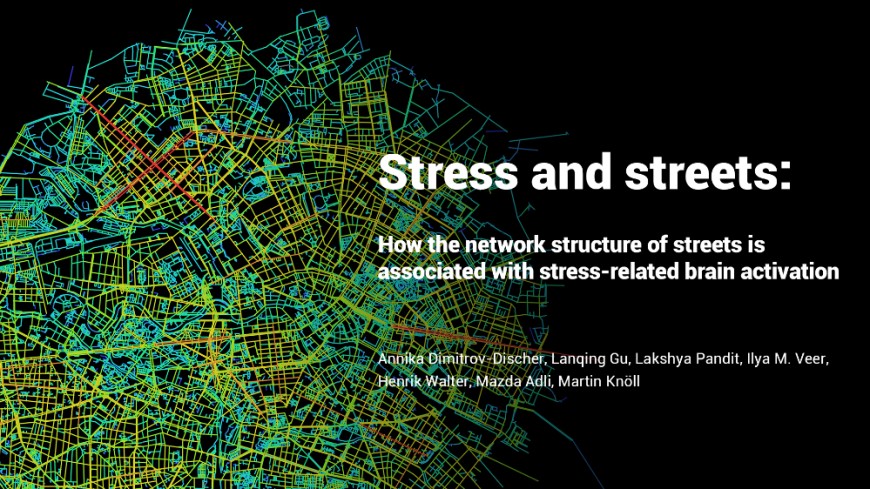Research Paper Published in Journal of Environmental Psychology
2023/10/25

Can urban streets affect our brain activity related to stress processing? The recently published research conducted by the research team of Prof. Martin Knöll from the Department of Architecture, TU Darmstadt, and Prof. Mazda Adli from the Department of Psychiatry and Neurosciences, Charité – Universitätsmedizin Berlin, confirmed the association between street network configuration in 1.5 km radius neighborhood area and activation in several brain regions related to stress processing.
By analyzing the neighborhood street network of 42 individuals in Berlin based on Space Syntax theory that considers a street network as a topological structure, network characteristics – global integration ('proximity' of a street to all the other streets in a network), local integration ('proximity' of a street to a certain number of streets within a walkable area), connectivity ('direct street connections' a street has), and normalized angular choice (NACH) ('straightest and shortest' route for a street in a street network) – were paired with functional magnetic resonance imaging (fMRI) scan of subjects during tasks with acute social stress induction. The results showed that high mean neighborhood-level integration, which indicates a neighborhood where one can easily access any points, was associated with less brain activation during stress provocation in several regions. The results underline the need to explore the potential of optimizing street networks to better understand pathways to urban mental health.

